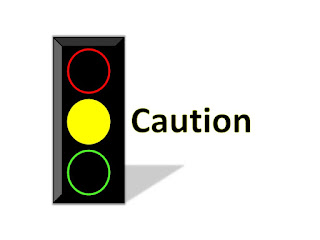Cyanos Activity July 19, 2021
Reconsider activities and limit exposure to the water.
Disclaimer: The information presented below reflects conditions throughout the lake and may differ from conditions on specific shorelines. For information regarding beach closings please contact the Torrington Area Health District or local town officials.
General Observations
Lake levels were up approximately 30cm following heavy rains over the weekend of
July 17th and 18th. Air temperature was unseasonably cool and skies were overcast. No
surface bloom was observed but the water clarity was low, which may have been reflective of algal productivity and/or inorganic materials washed into the lake as a result of the rain event.
Methods
AER visited Bantam Lake to conduct biweekly Cyanobacteria monitoring and monthly
water quality monitoring as part of the Bantam Lake Protective Association’s ongoing
lake management efforts. Data collected in the field included measurements of temperature, dissolved oxygen, specific conductance, relative phycocyanin concentration,
and pH at one-meter intervals from the top to the bottom of the water column, total
depth, and Secchi disk transparency. Those data were collected at four sites: the
North Bay Site (N 41.71087° W -73.21155°), the Center Lake Site (N 41.70056° W -
73.22102°), a site west of Folly Point (N 41.70773 W -73.22638), and at a site in the
South Bay region of the lake (N 41.69015 W -73.22728).
A plankton net tow sample using a 10µm mesh plankton net was collected at the Center Lake site. Approximately 500 mL from the top three meters of the water column
were integrated and collected for algae counts at the North Bay and Center Lake sites
using a three-meter-long sampling tube. These samples were preserved with Lugol’s
solution shortly after collection and stored at 3 C. Samples were also collected in a
similar fashion for analysis of microcystin toxins in the laboratory of Dr. Edwin Wong at Western Connecticut State University. Methods for analyses of the phytoplankton net
sample and the integrated samples discussed in our April 30th memo were followed.
Secchi Disk Transparency and Relative Phycocyanin
Secchi disk transparencies on July 19th were the lowest of the season to da
te and between 1.68m and 1.94m at the four sites (Table 1). Water transparency has steadily decreased since June 23rd (Fig. 1).
Phycocyanin is a photosynthetic pigment found in cyanobacteria and a good surrogate for cyanobacteria biomass. Since a primary standard was not used in instrument
calibration, the values across sites and dates are relative. Measurements were made
at 0.5 meter from the surface and at one-meter intervals down to 0.5 meters above the
bottom. Below we have plotted the average of the top three meters of the water column at each site for each date; the average for the lake was also plotted. Concurrent
with the decrease in Secchi transparency was the increase in relative phycocyanin
concentration (Fig. 1). Concentrations on July 19
th sharply increased from July 6th levels
and were the highest of the season to date.
Algae Community and Cyanobacteria Concentrations
Twenty-four (24) algal genera were detected from examinations of the plankton net
tow and integrated whole water samples. The Cyanobacteria (aka Blue-green Algae)
and Chlorophyta (aka Green Algae) accounted for 7 and 10 of the total genera observed, respectively. The remaining seven genera were divided among four other taxonomic groups.
Approximately 98% of all cells counted at both sites were Cyanobacteria. Cyanobacteria cell concentrations at the North Bay and Center Lake sites were 82,389 and
102,392 cells/mL, respectively. On July 6th, respective concentrations were 38,568 and
40,840 cells/mL.
In its guidance to municipal health departments, the CT Department of Public Health
and Department of Energy and Environmental Protection (CT DPH & CT DEEP 2019)
equates cell concentrations of >20,000 and <100,000 Cyanobacteria cells/mL with
Visual Rank Category 2 conditions; concentrations >100,000 cells/mL are equated
with Visual Rand Category 3 conditions. Public postings, among other measures, are
recommended for both categories, e.g., cautionary postings at public beaches for Category 2, and beach closures for Category 3.
The dominant Cyanobacteria genus continued to be Aphanizomenon spp. and Dolichospermum spp. (Fig. 2). Others included Microcystis spp., Aphanocapsa spp. and
Woronichinia spp. All these genera are listed in the literature as toxigenic (Cheung et.
al. 2013, CT DPH & CT DEEP 2019, EPA 2020).
Water Column Temperature and Oxygen Characteristics
Water temperatures near the surface were between 25 and 26°C (Table 1). The water
column at each site was stratified with a thermocline located between 3 and 4m of
depth at all sites except the South Bay site where the thermocline was just below 4m
of depth. Temperatures near the bottom varied from site to site (Table 1). Oxygen concentrations at the bottom of the water column at all sites but the South Bay site were
<1mg/L (Table 1). At the South Bay site, the oxygen concentration at the bottom of the
water column was 3.6mg/L.
Data is collected and analyzed by Aquatic Ecosystem Research who is contracted by Bantam Lake Protective Association.
Literature Cited
Connecticut Department of Public Health and Connecticut Department of Energy and
Environmental Protection [CT DPH & CT DEEP]. 2019. Guidance to Local Health Departments for Blue–Green Algae Blooms in Recreational Freshwaters. See https://portal.ct.gov/-/media/Departments-and-Agencies/DPH/dph/environmental_health/BEACH/Blue-Green-AlgaeBlooms_June2019_FINAL.pdf?la=en
Cheung MY, S Liang, and J Lee. 2013. Toxin-producing Cyanobacteria in Freshwater: A
Review of the Problems, Impact on Drinking Water Safety, and Efforts for Protecting
Public Health. Journal of Microbiology (2013) Vol. 51, No. 1, pp. 1–10. See
http://www.jlakes.org/ch/web/s12275-013-2549-3.pdf
United States Environmental Protection Agency [US EPA]. 2020. Health Effects from
Cyanotoxins. https://www.epa.gov/cyanohabs/health-effects-cyanotoxins




